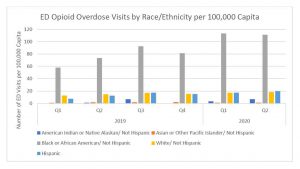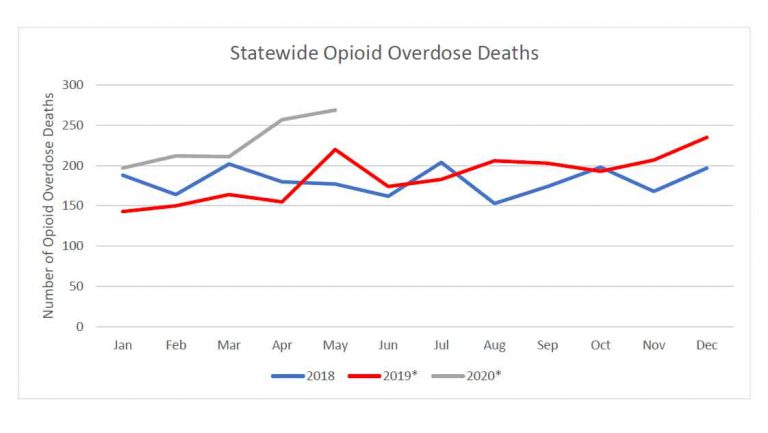SPRINGFIELD – Opioid overdoses are on the rise in Illinois, according to state health officials.
The year 2019 saw a 22% increase in opioid-related emergency room visits compared to the prior year — and a 3% increase in overdose deaths, from 2,167 in 2018 to 2,233 in 2019. Preliminary data for the first half of 2020 show a worsening trend, according to last month’s Statewide Semiannual Opioid Report from the Illinois Department of Public Health.
While in the U.S. overall, white people, ages 25 to 34, are dying from opioid overdoses at the highest rate, in Illinois, the data shows the highest death rate to be among Black men in their 50s. The report says targeted interventions are needed to address the state’s ongoing opioid epidemic.
Dr. Elise Wessol, an addiction medicine physician at Carle Foundation Hospital in Urbana, says state data shows ERs across the state are seeing more than 2,000 overdose visits a month — “an increase of 30 to 40% over 2019, which itself was the highest seen in record.”
While treatment providers have adapted to the COVID-19 pandemic with more virtual options, Wessol says many who could really benefit from in-person help are not being reached.
“This has led to a high degree of suffering in silence, which in turn spurs stress, strong emotions, self-medication with drugs and alcohol, which ultimately creates the perfect storm for an overdose,” Wessol says. “And that’s what we have seen in Illinois and across the country.”

About 80% of people with an opioid use disorder do not receive life-saving medications to treat addiction, Wessol says.
Closing the treatment gap will require greater efforts to educate physicians and the public — and address the persistent stigma associated with addiction, she says.
Back in February, Gov. J.B. Pritzker signed an executive order to strengthen the state’s commitment to ending the opioid epidemic, with a call for new strategies focused on social equity and harm reduction.
State agencies responded by “creating programs to address the opioid epidemic in communities at highest risk of overdose,” the public health report states.
But as Illinois continues to experience a rise in both fatal and non-fatal opioid overdoses, the authors write, additional steps are “imperative” to address the opioid epidemic afflicting the state.
The Illinois Helpline for Opioids and Other Substances can be reached by calling 833-2FINDHELP, or by texting “HELP” to 833234.
Christine Herman is a reporter with Illinois Newsroom. Follow her on Twitter:@CTHerman

